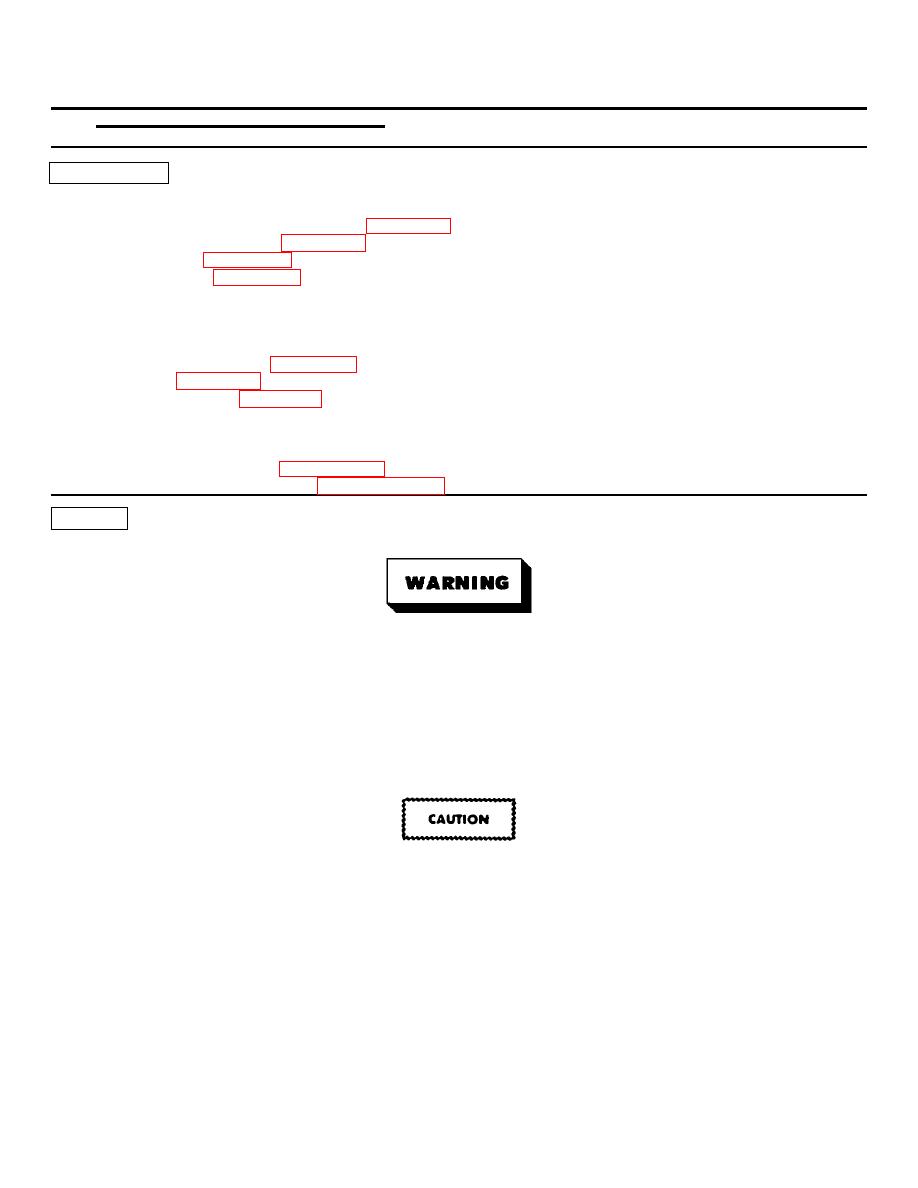
ARMY TM 9-4120-380-14
NAVY EE-000-BA-MMA-010/7053-AC
AIR FORCE TO 35E9-136-21
5.13. LEAK TESTING REFRIGERANT SYSTEM. Thus task covers service.
INITIAL SETUP
Tools:
Tool kit, service refrigeration unit (Item 1, Appendix B)
Leak detector (part of Item 1, Appendix B)
Gloves, chemical (Appendix C)
Goggles, industrial (Appendix C)
Personnel:
1
Materials:
Nitrogen, technical (Item 9, Appendix E)
Rags (Item 7, Appendix E)
Refrigerant-22 (Item 6, Appendix E)
Equipment Conditions
(1)
Install service manifold (paragraph 5 9), and
(2)
Install R-22 refrigerant cylinder (paragraph 5.15, Step d).
SERVICE
Death or serious injury may result if personnel fall to observe safety precautions. Use
great care to avoid contact with liquid refrigerant or refrigerant gas being discharged
under pressure. Sudden and irreversible tissue damage can result from freezing. Wear
thermal protective gloves and a face protector or goggles in any situation where skin-
eye-contact is possible.
Prevent contact of refrigerant gas with flame or hot surfaces Heat causes the refrigerant
to break down and form carbonyl chloride (phosgene), a highly poisonous and
corrosive gas.
Nitrogen cylinders are pressurized containers. The pressure m the cylinder can exceed
2000 pS1 A nitrogen pressure regulator should be used at all fumes when nitrogen is
used for leak check or purge operations. Do not allow nitrogen pressure applied to unit
to exceed 300 psig during leak testing.
Nitrogen is an inert gas However, it also presents danger as a sufficient and, therefore,
must also be discharged ventilated location.
5-20

